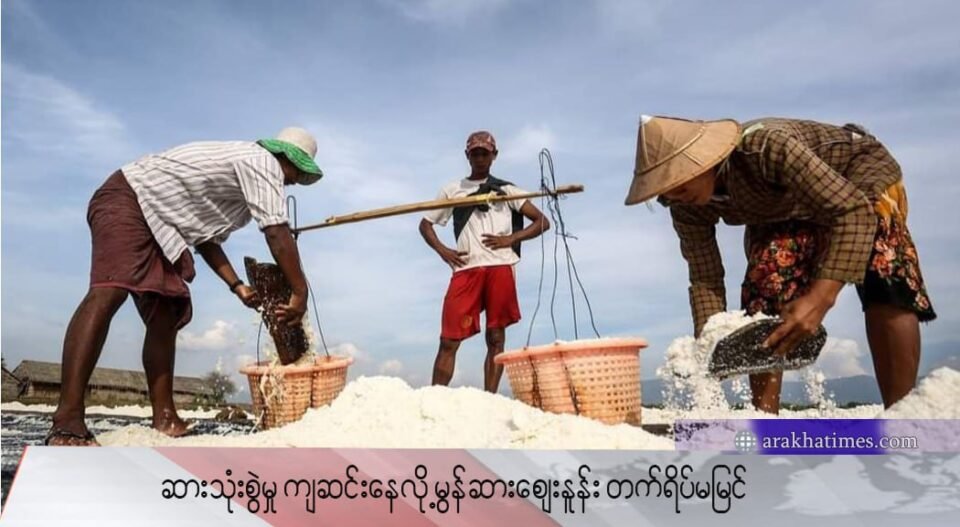Declining Salt Demand Dampens Prospects for Rising Salt Prices in Mon State
Arakha Times (November 7, 2024)
Salt farmers in Mon State are not optimistic about an increase in salt prices, even though the salt harvesting season has begun. Mon State’s salt is traditionally sold within Mon as well as to Karen State, Tanintharyi Region, and Mandalay Region. However, the demand for salt has decreased as several industries that rely on salt for production have paused operations.
U Tun Khin, a salt farmer, noted, “We can’t really expect the market to improve because many salt-using industries have reduced their consumption due to various issues. The decrease in demand directly impacts us, and we don’t foresee prices getting better. Given the current salt prices, we’re barely making a profit. Labor costs have risen, and fuel prices have gone up, too. We keep working not for profit but to ensure our workers can make a living.”
At present, the price of raw salt is between 150 and 180 kyats per viss (about 1.6 kg), though farmers need at least 200 kyats per viss to break even.
Additionally, the cost of the fuel needed for salt production has risen, and it’s become increasingly difficult to hire workers. With salt prices continuing to fall and the potential for losses high, some salt farmers in Mon State are halting operations this season.
Another salt farmer, U Hla Tin, a salt farmer from Thanbyuzayat Township, explained, “Some of the salt ponds are not operational. There’s hardly any market for salt, and the production costs are high. Workers are hard to find, and fuel prices are also high. Because of this, some have paused their operations. We can only run about 80% of the salt ponds we usually operate.” U Hla Tin shared with Arakha times, “If salt prices could go up, production costs could go down, and we could hire as many workers as needed, we’d be able to sell salt at 150 kyats per viss. Even if we can’t sell at 150, since we’re already producing, we have no choice but to sell at a loss.”
Salt production in Mon State runs from November to May each year, with more than 4,700 acres yielding approximately 45,000 tons annually. Although high-quality salt from Mon was trial exported to South Korea last season, future exports remain uncertain. If Mon State’s salt could be exported regularly, prices would likely rise, benefiting local farmers with increased profitability.
